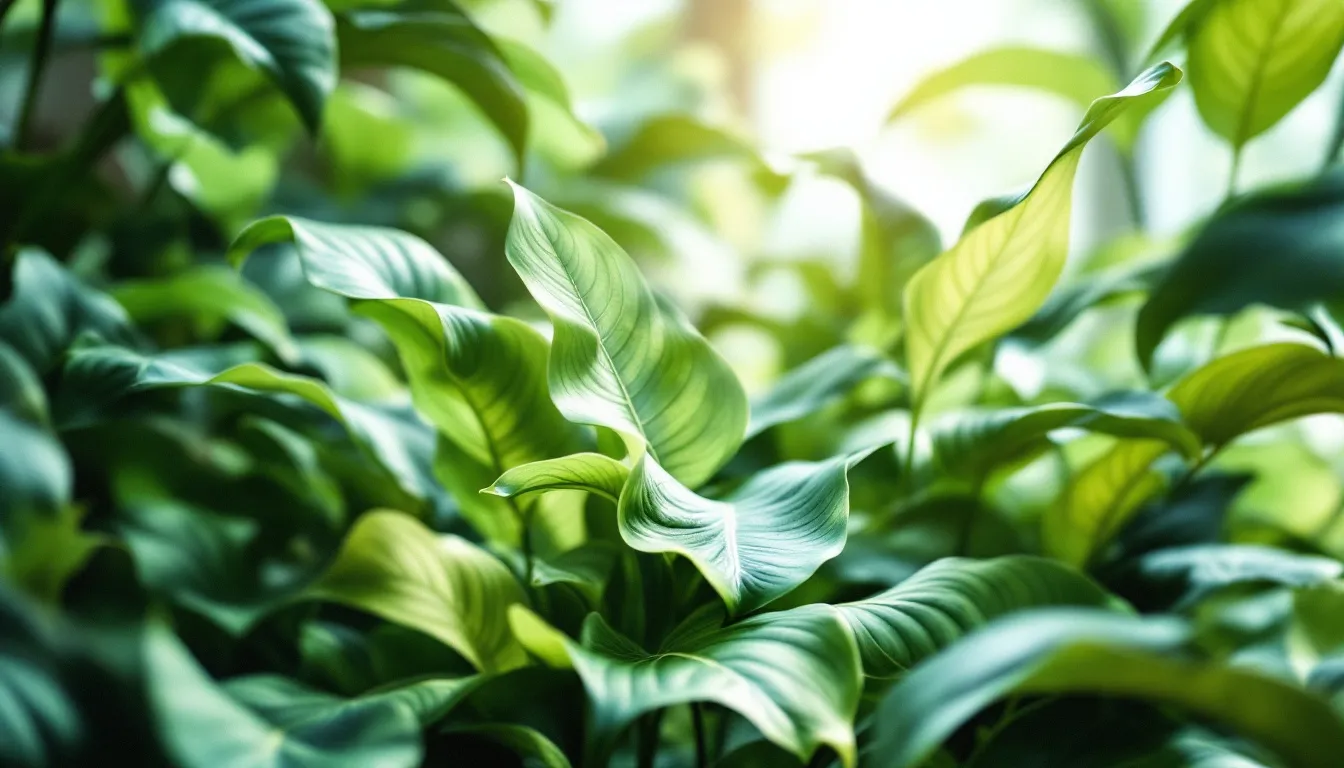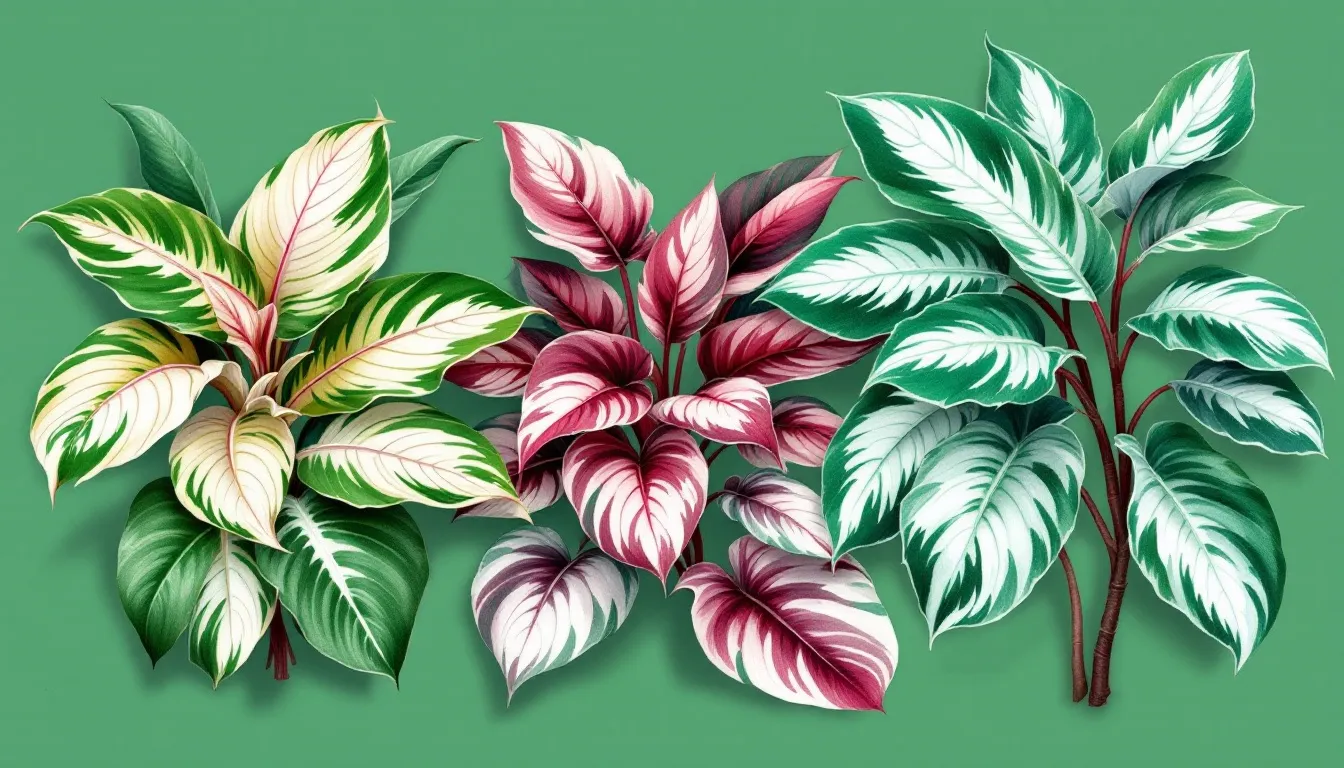Chinese Evergreen | Aglaonema Varieties | House Plants
Top Tips for Caring for Your Aglaonemas Plant Indoors
Want to know how to take care of an Aglaonemas plant indoors? This guide will walk you through essential tips on light, watering, humidity, and more to keep your plant healthy and vibrant.
Key Takeaways
-
Aglaonemas, also known as Chinese Evergreens, thrive indoors due to their ability to adapt to low light and various humidity levels, making them ideal for indoor gardening.
-
Proper care involves consistent watering when the soil is about 50% dry, maintaining humidity between 60-70%, and ensuring well-draining soil to prevent root rot.
-
Aglaonemas are moderately toxic to pets and children, so they should be kept out of reach; care should also be taken during handling to avoid skin irritation from sap.
Understanding Aglaonemas

Aglaonema plants are native to the lush, humid forests of Asia and New Guinea. With approximately 21 different species, these plants are widely known as Chinese Evergreens and the Chinese evergreen plant. What makes Aglaonemas truly special is their remarkable adaptability and the stunning variety of foliage they offer, which belongs to the Araceae family.
From the silvery leaves of the Silver Bay to the vibrant reds of the Red Emerald, Aglaonemas are celebrated for their decorative appeal. These plants are also steeped in cultural significance, symbolizing good fortune in various Asian cultures. Their name, derived from Greek, means ‘bright thread’, aptly reflecting their striking appearance.
Light Requirements for Aglaonemas

Aglaonemas can tolerate low light and tolerates low light, making them perfect for indoor gardening settings. They flourish in bright to medium indirect light but can also thrive in low-light conditions. This adaptability makes them a popular choice for spaces with varied fluorescent lighting levels.
However, it’s important to avoid direct sunlight, as it can scorch their delicate leaves. For optimal growth, Aglaonema prefers bright indirect light, which helps maintain their vibrant colors without the risk of damage. If you notice the color of the leaves beginning to fade, it may be a sign that your plant needs more indirect sunlight.
In low light, Aglaonemas may grow slower as a slow growing plant but will survive. Watch for drooping leaves, which can signal inadequate lighting or improper watering. Adjusting light conditions can help maintain your plant’s health and vibrancy.
Watering Your Aglaonemas
Proper watering is key to Aglaonema health and growth. Water when about 50% of the soil is dry, typically the top 2 inches. In winter, reduce watering frequency as plants become less active. Brighter light conditions will require more frequent watering compared to lower light settings.
Be mindful of the signs of overwatering, such as yellow leaves, which indicate that the plant is receiving too much moisture. Conversely, underwatering can cause the leaves to wilt, signaling a need for more water. Make sure the pot has drainage holes to prevent water accumulation and root rot.
A moisture meter can help accurately determine when your Aglaonema needs watering. Keep the soil evenly moist but not soggy to promote healthy growth.
Humidity Needs
Aglaonemas thrive in higher humidity levels ranging from 60% to 70%, which mimics their natural tropical habitat. Avoid placing them near heating or cooling vents, as dry air can damage the leaves. Maintaining the right humidity will help keep your plant lush and healthy.
One effective way to increase humidity around your plant is by using a pebble tray. Simply place a tray filled with pebbles and water under the pot; as the water evaporates, it will increase the humidity around the plant.
Temperature Preferences
Aglaonemas thrive best in a warm and humid environment, with ideal temperatures ranging between 65°F and 76°F (18°C to 24°C). Maintaining consistent temperatures is important, as fluctuations can stress the plant.
Protect your Aglaonemas by avoiding cold drafts and air conditioning vents. Also, keep them away from sources of extreme heat like drafty areas and heater vents.
Soil and Potting
Aglaonemas thrive in a well-draining potting mix. A blend of peat moss, vermiculite, and perlite creates an ideal environment, ensuring good drainage essential for their health, especially during repotting.
Keep the soil moist but not saturated, and discard any excess water that collects in the saucer under the pot.
When selecting a pot, choose one that is one size larger than the current one to allow sufficient growth space. If you notice roots above the soil or coming out of the drainage holes, it’s time to shift to larger pots.
Feeding and Fertilizing
Feed Aglaonemas once a month during the growing season, specifically in spring and summer. Use a general-purpose houseplant fertilizer diluted to half strength to avoid over-fertilization. Over-fertilization can lead to leaf tip burn, so it’s essential to follow the recommended dilution.
Ensure that the fertilizer is applied evenly and that the soil is moist before feeding with water soluble fertilizer to prevent root damage. Proper feeding will help your Aglaonemas maintain their vibrant foliage and promote healthy growth.
Common Problems and Solutions
One common problem with Aglaonemas is tipping, where leaf tips dry out and turn brown. This can be caused by overwatering, too much fertilizer, or using tap water. To prevent tipping, ensure that you are watering correctly, using the right amount of fertilizer, and preferably using distilled or rainwater.
If you notice overwatering, allow the soil to dry completely before watering again. Proper care and attention to these common issues will help keep your Aglaonemas healthy and beautiful.
Toxicity Precautions
Aglaonema plants are moderately toxic to pets and children due to the presence of calcium oxalate crystals. Ingestion can lead to symptoms such as vomiting and irritation of the mouth in pets, and gastrointestinal distress in children.
Keep Aglaonema plants out of reach of pets and children to ensure safety, and seek immediate medical attention if ingestion occurs. Exposure to the sap can also cause skin irritation or rashes, so handle the plants with care and wash your hands thoroughly after touching them.
Pruning and Maintenance
Pruning your Aglaonemas should be done with clean, sharp tools to prevent the spread of disease. Regularly cleaning the leaves with a damp cloth can prevent dust buildup, which may hinder photosynthesis.
Regularly check for pests and adjust care based on seasonal changes. Proper maintenance ensures your Aglaonemas remain a beautiful addition to your home or office.
Repotting Tips
Repot Aglaonemas every 2 to 3 years for optimal growth. Signs that repotting is needed include overgrown or rootbound plants.
Choose a pot 1 to 2 inches wider than the root ball when repotting to allow for growth. Be aware of transplant shock, which may cause leaf loss or discoloration shortly after moving to a new environment.
Popular Varieties of Aglaonemas

Aglaonemas come in a wide variety of stunning colors and patterns, including other varieties that make them a popular choice for indoor plants. Varieties like ‘King Red’ and ‘Red Catrina’ showcase vibrant red leaves with dark green edges, adding a bold splash of color to any space. Meanwhile, the ‘Spring Snow’ cultivar has creamy white leaves accented with bright green edges, offering a more subtle elegance.
For unique foliage, the ‘Siam Aurora’ cultivar features striking foliage long leaves with bright pink, chartreuse, and deep green dark green leaves patterns. The ‘Silver Queen’ Aglaonema, with pale silvery green leaves and dark green speckles, is another classic choice.
Different varieties may have unique maintenance needs. For instance, ‘Lady Valentine’ and ‘Adelia’ may require higher humidity to thrive. Overall, Aglaonemas are prized as a popular indoor plant for their exotic foliage and low maintenance, enhancing indoor aesthetics.
Summary
In summary, Aglaonemas are a fantastic addition to any indoor space, offering both beauty and ease of care. By understanding their light, watering, humidity, and temperature needs, you can ensure your Aglaonemas thrive. Proper soil, feeding, and regular maintenance further contribute to their health and vibrancy.
Caring for Aglaonemas not only enhances your home but also brings a sense of the exotic indoors. With the right care and attention, these resilient plants will reward you with their stunning foliage and lasting charm. Embrace the joy of indoor gardening with Aglaonemas and watch your space transform into a green haven.
Frequently Asked Questions
How often should I water my Aglaonema?
You should water your Aglaonema when about 50% of the soil is dry, typically when the top 2 inches feel dry to the touch. This ensures the plant remains healthy without overwatering.
What kind of light do Aglaonemas need?
Aglaonemas thrive in bright indirect light but can also adapt to low light conditions. Ensuring they receive the right light will promote healthy growth.
Are Aglaonemas toxic to pets?
Aglaonemas are indeed moderately toxic to pets, potentially leading to symptoms like vomiting and mouth irritation if consumed. It's best to keep them out of reach of pets for their safety.
How do I increase humidity for my Aglaonema?
To increase humidity for your Aglaonema, use a pebble tray filled with water or place the plant in a more humid environment, such as a bathroom. This will help create the moist conditions the plant thrives in.
When should I repot my Aglaonema?
You should repot your Aglaonema every 2 to 3 years or when it becomes rootbound to ensure its healthy growth. Keeping an eye on its root system will help maintain its vitality.







